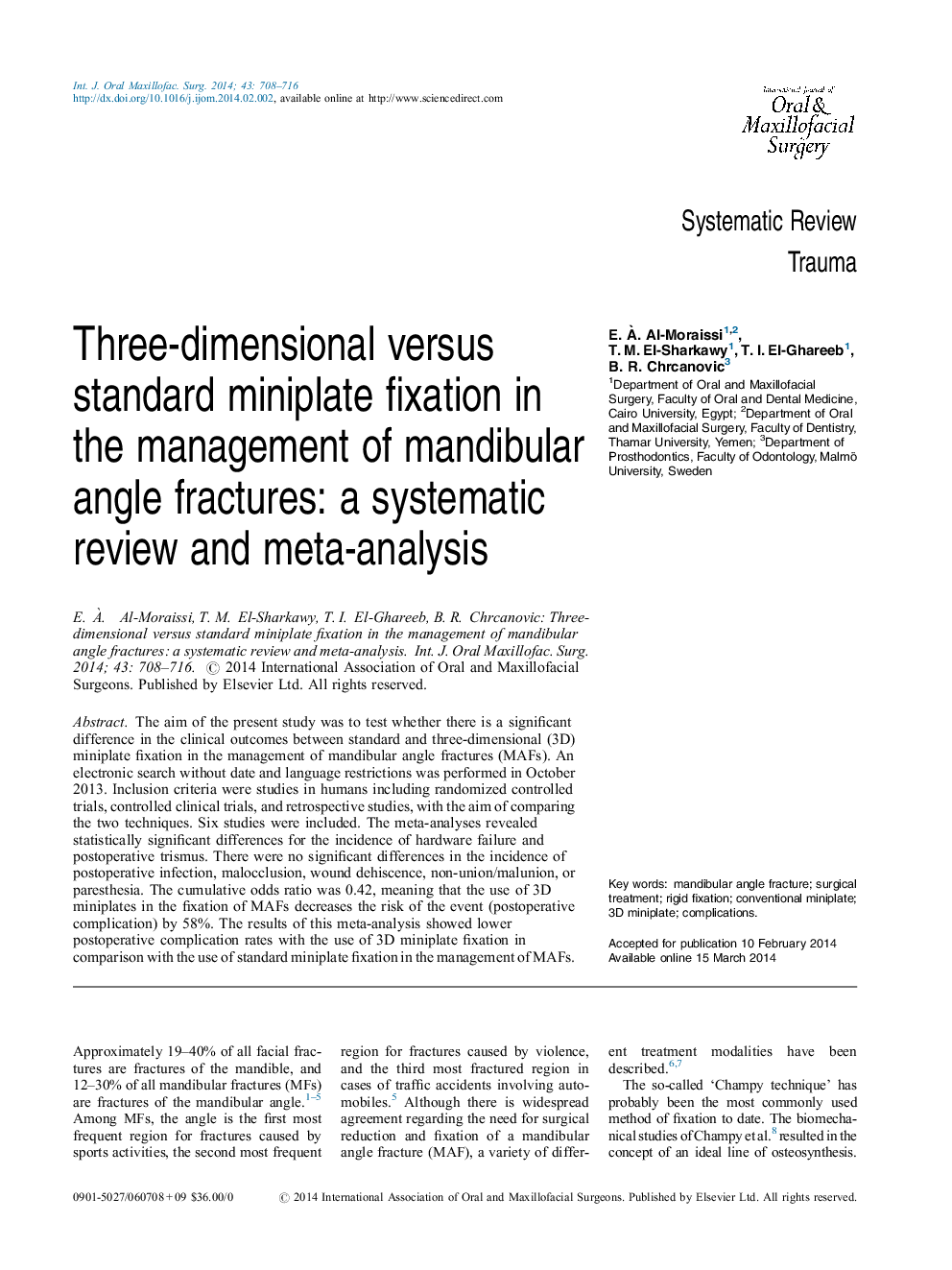| کد مقاله | کد نشریه | سال انتشار | مقاله انگلیسی | نسخه تمام متن |
|---|---|---|---|---|
| 3132535 | 1584141 | 2014 | 9 صفحه PDF | دانلود رایگان |
The aim of the present study was to test whether there is a significant difference in the clinical outcomes between standard and three-dimensional (3D) miniplate fixation in the management of mandibular angle fractures (MAFs). An electronic search without date and language restrictions was performed in October 2013. Inclusion criteria were studies in humans including randomized controlled trials, controlled clinical trials, and retrospective studies, with the aim of comparing the two techniques. Six studies were included. The meta-analyses revealed statistically significant differences for the incidence of hardware failure and postoperative trismus. There were no significant differences in the incidence of postoperative infection, malocclusion, wound dehiscence, non-union/malunion, or paresthesia. The cumulative odds ratio was 0.42, meaning that the use of 3D miniplates in the fixation of MAFs decreases the risk of the event (postoperative complication) by 58%. The results of this meta-analysis showed lower postoperative complication rates with the use of 3D miniplate fixation in comparison with the use of standard miniplate fixation in the management of MAFs.
Journal: International Journal of Oral and Maxillofacial Surgery - Volume 43, Issue 6, June 2014, Pages 708–716
